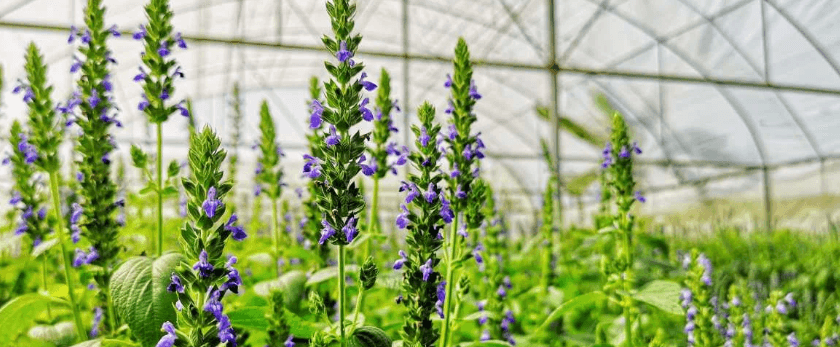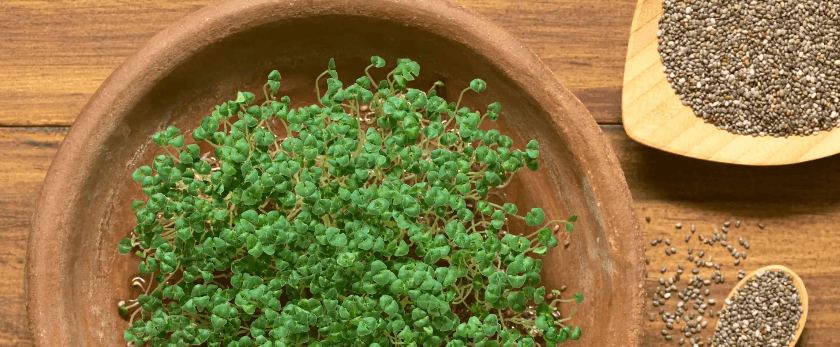Chia seeds have gained popularity in recent years due to their numerous health benefits and versatility in cooking. But did you know that chia plants are also easy to grow and can be a great addition to your sustainable gardening practices? In this article, we will discuss how to grow chia and the best practices for caring for these plants.
What is Chia?
Chia (Salvia hispanica) is a flowering plant native to Mexico and Guatemala. It belongs to the mint family and has been cultivated for centuries for its edible seeds. Chia seeds are rich in omega-3 fatty acids, fiber, and antioxidants, making them a popular superfood.
Aside from its nutritional value, chia plants also have environmental benefits. They are drought-resistant and can thrive in a variety of soil types, making them a great addition to sustainable gardening practices.

How to Care for Chia
Watering
Chia plants require regular watering, especially during the germination and flowering stages. However, it is essential to avoid overwatering, as this can lead to root rot. The best way to water chia plants is to keep the soil consistently moist but not waterlogged.
During hot and dry weather, chia plants may need more frequent watering. You can also mulch around the plants to help retain moisture in the soil.
Light
Chia plants prefer full sun but can also tolerate partial shade. If you are growing chia indoors, make sure to place them near a sunny window or use grow lights to provide sufficient light.
Soil
Chia plants can grow in a variety of soil types, but they prefer well-draining soil with a pH level of 6.0 to 8.0. You can improve the soil's quality by adding compost or organic matter before planting.
Fertilizer
Chia plants do not require much fertilizer, but you can use a balanced organic fertilizer during the growing season to promote healthy growth. Avoid using chemical fertilizers, as they can harm beneficial microorganisms in the soil.
Pruning
Pruning is not necessary for chia plants, but you can trim off any dead or damaged leaves to promote new growth. You can also pinch off the tips of the plants to encourage bushier growth.
What is the Best Time to Grow Chia?
Chia plants are annuals, meaning they complete their life cycle in one growing season. The best time to grow chia depends on your location and climate. In general, chia plants can be grown in the spring after the last frost or in the fall before the first frost.
If you live in a warmer climate, you can also grow chia during the winter months. Just make sure to provide adequate protection from frost and cold temperatures.
Common Problems with Chia
Chia plants are relatively easy to grow, but they can still face some common problems. Here are some of the issues you may encounter when growing chia and how to address them:
- Pests: Chia plants are generally pest-resistant, but they can still be susceptible to aphids, whiteflies, and spider mites. You can use organic pest control methods such as neem oil or insecticidal soap to get rid of these pests.
- Diseases: Chia plants can be affected by fungal diseases such as powdery mildew and root rot. To prevent these diseases, make sure to provide adequate air circulation and avoid overwatering.
- Weeds: Weeds can compete with chia plants for nutrients and water. Regular weeding can help keep your chia plants healthy and thriving.
Sustainable Disposal of Chia Plants
When it comes to sustainable gardening, it is essential to consider the end of a plant's life cycle. Chia plants can produce a large number of seeds, and it is crucial to dispose of them responsibly to prevent them from becoming invasive.
One way to dispose of chia plants is to harvest the seeds and use them in cooking or as a nutritious addition to your diet. You can also save the seeds for planting in the next growing season.
If you do not plan on using the seeds, you can compost the plant material. Make sure to remove any seeds before composting to prevent them from sprouting in your compost pile.
Conclusion
Growing chia plants is a great way to incorporate sustainable gardening practices into your routine. These plants are not only beneficial for your health but also for the environment. By following the tips mentioned in this article, you can successfully grow chia and contribute to a greener, more eco-friendly lifestyle. Remember to dispose of chia plants responsibly and enjoy the many benefits they have to offer. Happy gardening!










